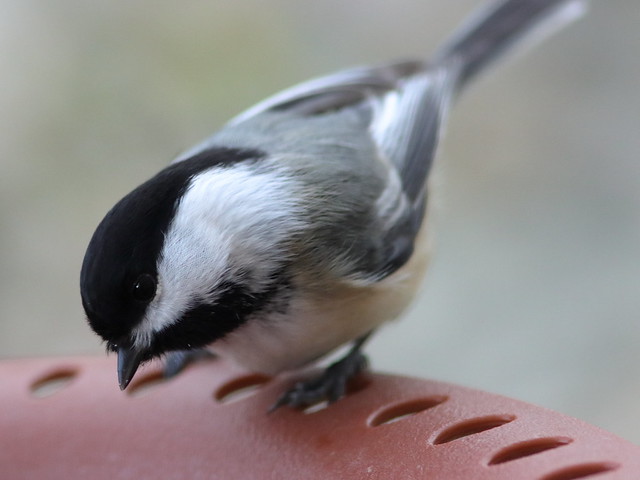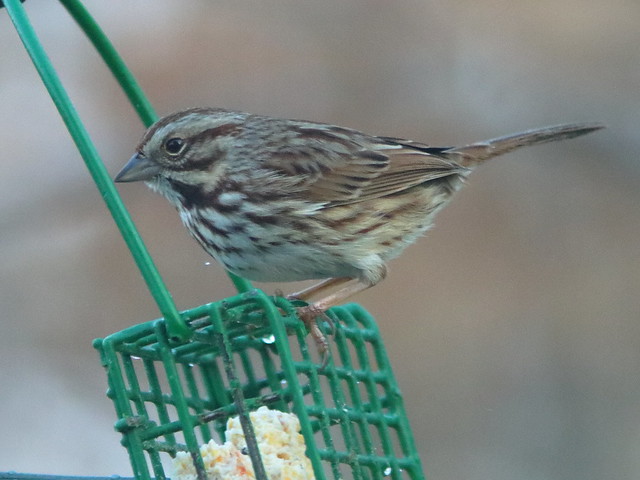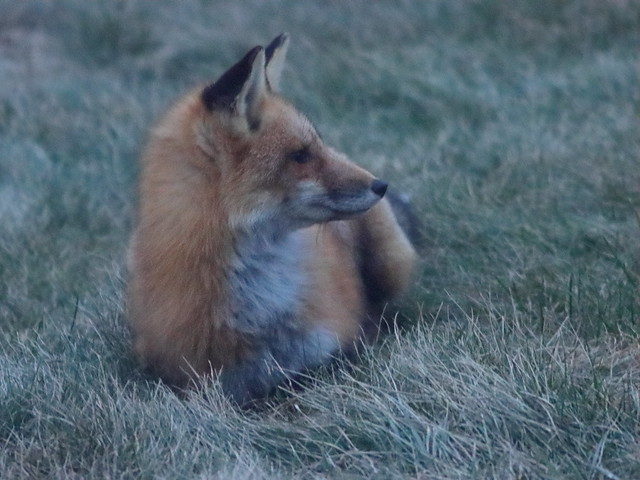Any wildlife watcher, even if "just a birder," can't help but tune in on the behavioral traits of squirrels. If surprised out in the open, they normally run to the nearest tree and disappear on the opposite side of the trunk as they climb upward.
If it has a choice of trees, a squirrel will avoid a lone tree which is a dead-end death trap if the predator can climb, as it does not provide a path of escape to neighboring trees. It will run to a safer tree as soon as possible. As the sequence of videos at the end of this post prove, humans are not the only mammals aware of this behavior.
Driven by instinct, a Gray Squirrel made a fatal mistake. Squirrel-lovers may wish to skip the three videos below, but first...
A Red-shouldered Hawk roosted in the back yard again this week:
It lifted into flight. The backlight from the cloudy sky was a bit softer and I was able to adjust the exposure compensation more accurately to show better plumage details:
Also from the back yard, I obtained photos of a busy White-breasted Nuthatch as it searched the branches for unwary insects:
The heated bird bath proved its worth after the overnight temperature dropped to 19°F (-7.2°C):
Hartford skyline early in the morning:
The gray sky of a dreary morning reflected on the lake:
The Red Fox finally dined on squirrel, after a masterful act of deception.
This first of three RING surveillance camera videos looks to the west and incidentally captures action of a portion of the bird feeders at the north corner of the house, to the extreme right. (Best if viewed full-screen on tablet or desk-top.)
Foxes hunt most actively around sunrise, which was at 6:46 AM this morning. The first video starts at 6:45 AM. Be sure to see the fox chase the squirrel in the very first two seconds! The fox has been hiding under the conical juniper tree, awaiting the arrival of the squirrels, day feeders who forage for spilled seed under the feeders. In a flash, a squirrel narrowly escapes the jaws of the fox and dashes up the nearest tree, a lone leafless aspen.
The fox watches as the squirrel climbs higher in the tree.
The third clip starts only a few seconds later and shows the fox loping away, seemingly deciding to find an easier prey item before twilight ends. The squirrel now perceives no immediate threat and instinctively vacates the lonely perch in hopes of reaching the safety of the adjacent wooded area. In the meantime, the sly fox, once out of view, quickly ascends the rock face and returns downslope at top speed, perfectly timing its arrival just as the squirrel has reached the ground. It chases its quarry and overtakes it, but before it reaches the safety of the trees, the squirrel desperately dodges out into the open grass. The fox captures and subdues the squirrel (at about the 13 second mark) and then carries it off. There is no further action after the 25 second mark.
This week's Header: Hartford in early morning sunlight
= = = = = = = = = = = = = = = =
My Corner of the World
________________________________________________
Please visit the links to all these posts to see some excellent photos on display
________________________________________________






















































